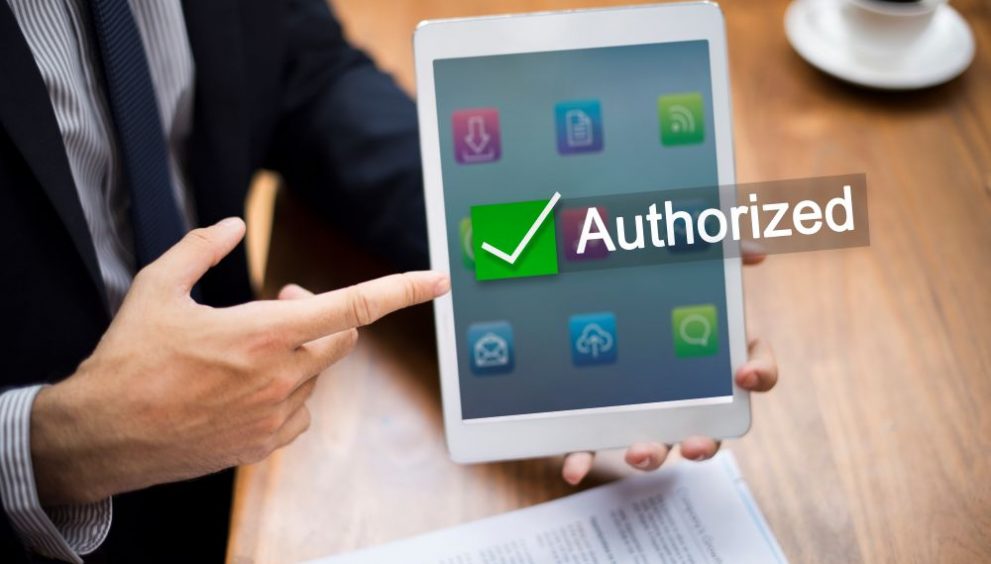Cyber threats are becoming increasingly sophisticated and relying solely on passwords for online security is no longer sufficient. Hackers are constantly devising new ways to crack passwords and gain unauthorized access to accounts, putting your sensitive information at risk. This is where two-factor authentication (2FA) comes into play. By adding an extra layer of security, 2FA helps protect your online accounts from online threats, even if your password is compromised.
But what exactly is 2FA, and how does it work? In this blog, we’ll dive into the details of two-factor authentication, explore its benefits, and discuss how it can help you stay safe in the face of growing online security threats.
What is Two-Factor Authentication (2FA)?
Two-factor authentication (2FA), also known as 2 step verification or 2FA, is a security process that requires users to provide two distinct forms of identification to access their accounts. The first factor is typically something you know, such as your password, while the second factor is something you have, like your smartphone or a physical security key.
Here’s how it works:
- You enter your username and password as usual.
- Instead of immediately granting access, the system prompts you for a second form of identification.
- You provide the second factor, such as a code sent to your phone or generated by an authenticator app.
- Only after successfully presenting both factors are you granted access to your account.
By requiring two independent forms of identification, 2FA makes it significantly harder for unauthorized individuals to access your accounts, even if they manage to obtain your password.
How Does 2FA Protect Against Online Threats?
Online threats come in many forms, from phishing scams to brute-force attacks. Passwords alone are no longer sufficient to protect against these threats. Here’s how 2FA adds an extra layer of security:
| Threat | How 2FA Helps |
|---|---|
| Password Cracking | Even if a hacker guesses or cracks your password, they won’t be able to access your account without the second factor. |
| Phishing Scams | If you accidentally enter your password on a fake login page, the attacker still won’t be able to log in without the second factor. |
| Keylogging | If malware records your keystrokes and captures your password, the attacker will be stopped by the 2FA requirement. |
| Brute-Force Attacks | Automated attempts to guess your password will fail without the second factor, making brute-force attacks impractical. |
By requiring a second form of identification, 2FA effectively neutralizes the risks associated with compromised passwords. Even if an attacker obtains your password through any of these methods, they won’t be able to access your account without the second factor.
Benefits of Two-Factor Authentication for Online Security
Implementing 2FA offers several key advantages for your online security:
- Greatly reduces the risk of unauthorized access to your accounts
- Protects your sensitive information, even if your password is compromised
- Helps prevent identity theft and financial fraud
- Provides an additional layer of security for remote access and cloud services
- Meets regulatory compliance requirements for certain industries (e.g., healthcare, finance)
- Boosts user confidence in the security of your online services
Types of Two-Factor Authentication Methods
There are several common methods for implementing 2FA, each with its own advantages:
SMS-Based Authentication
One of the most widely used 2FA methods is SMS-based authentication. When you log in with your password, the system sends a one-time code via text message to your registered mobile phone number. You then enter this code to complete the login process.
SMS-based 2FA is easy to set up and use, as most people have access to a mobile phone. However, it does have some limitations:
- SMS messages can be intercepted or delayed.
- If you lose your phone or change your number, you may be locked out of your accounts.
- Some users may find it inconvenient to retrieve codes from their phone during login.
Authenticator Apps and Time-Based Tokens
Authenticator apps, such as Google Authenticator or Microsoft Authenticator, generate time-based one-time passwords (TOTP) that you use as your second factor. These apps are more secure than SMS, as they don’t rely on your mobile carrier and are not susceptible to interception.
Here’s how it works:
- You set up the authenticator app on your smartphone by scanning a QR code or manually entering a secret key provided by the service.
- The app generates a new six-digit code every 30 seconds based on the secret key and the current time.
- When prompted during login, you open the app and enter the current code.
Authenticator apps offer a more secure and reliable 2FA solution compared to SMS. They work offline and are not dependent on mobile network coverage. However, you still need to have your phone with you to generate the codes.
Biometric Authentication
Biometric authentication uses unique physical characteristics, such as your fingerprint or facial features, as the second factor. This method is becoming increasingly popular, especially on smartphones and laptops equipped with biometric sensors.
When logging in, you provide your password as usual and then authenticate using your fingerprint or face. This eliminates the need to retrieve codes from your phone or carry a separate security key.
Biometric 2FA offers several advantages:
- It’s highly secure, as biometric data is unique to each individual
- It’s convenient and fast, requiring just a touch or glance to authenticate
- It doesn’t require carrying any additional devices or remembering codes
However, biometric authentication does raise some privacy concerns, as it involves sharing your biometric data with the service provider. It’s important to carefully review the privacy policies of services that use biometric 2FA.
How 2FA Helps Mitigate Online Security Threats
By now, it’s clear that 2FA is a powerful tool for enhancing online security. Let’s take a closer look at how it helps mitigate specific online security threats:
- Phishing Attacks: In a phishing attack, a hacker tries to trick you into entering your login credentials on a fake website. Even if you fall for the scam and enter your password, the attacker won’t be able to log in without the second factor. 2FA helps protect against phishing attack online by requiring an additional form of identification.
- Keylogging: Keylogging malware records your keystrokes and captures your passwords as you type them. However, with 2FA enabled, the captured password alone is not enough to access your account. The attacker would also need access to your second factor, such as your phone or security key.
- Credential Stuffing: In a credential stuffing attack, hackers use lists of stolen username and password combinations to attempt to log into various services. If you use the same password across multiple accounts, a breach on one service could compromise your other accounts. 2FA helps mitigate this risk by requiring a second factor, even if the attacker has your password.
- Man-in-the-Middle Attacks: In a man-in-the-middle attack, a hacker intercepts the communication between you and the service you’re trying to log into. They can capture your login credentials and use them to access your account. However, with 2FA, the attacker would also need to intercept the second factor, which is much harder to accomplish.
By implementing 2FA, you can significantly reduce the risk of falling victim to these online threats. Even if an attacker manages to obtain your password through any of these methods, they won’t be able to access your account without the second factor.
Protection Against Password Cracking and Brute Force Attacks
Password cracking and brute force attacks are common methods used by hackers to guess or crack passwords. In a brute force attack, an attacker uses automated tools to try a large number of password combinations until they find the correct one. This method can be effective against weak or commonly used passwords.
2FA provides an additional layer of defense against these types of attacks. Even if an attacker manages to guess or crack your password, they won’t be able to log in without the second factor. This makes it much harder for hackers to gain unauthorized access to your accounts, even if your password is compromised.
Here’s how 2FA helps protect against password cracking and brute force attacks:
- The second factor is typically not something that can be guessed or cracked, such as a fingerprint or a physical security key.
- The codes generated by authenticator apps or sent via SMS are time-limited and change frequently, making them difficult to guess or reuse.
- Many services implement rate limiting or account lockouts after a certain number of failed login attempts, further thwarting brute force attacks.
By requiring a second form of identification, 2FA makes password cracking and brute force attacks much less effective. Even if an attacker has a list of commonly used passwords or a powerful password-cracking tool, they won’t be able to access your account without the second factor.
Quick Heal: Enhance Your Online Security with 2FA
At Quick Heal, we understand the importance of online security in today’s digital landscape. That’s why our comprehensive security solutions, such as Quick Heal Total Security, offer built-in support for two-factor authentication.
Quick Heal Total Security provides robust protection against online threats phishing, malware, and other cyber threats. By integrating 2FA into our security suite, we help our users further enhance their online security and protect their sensitive information from unauthorized access. Our 2FA implementation supports various methods, including SMS-based authentication, authenticator apps, and biometric authentication (where available). This allows users to choose the 2FA method that best suits their needs and preferences.
In addition to 2FA support, Quick Heal Total Security offers a range of features designed to keep you safe online:
- Advanced malware detection and removal
- Web security and anti-phishing protection
- Firewall and network protection
- Safe banking and online transaction security
- Parental controls and child safety features
- Data theft prevention and privacy protection
By combining powerful antivirus and internet security features with 2FA support, Quick Heal Total Security provides comprehensive protection against online threats and helps keep your digital life secure.
Ensure Safety with Quick Heal
Two-factor authentication (2FA) has emerged as a crucial tool for enhancing the security of your online accounts and protecting your sensitive information from unauthorized access.
As a responsible digital citizen, it’s essential to prioritize your online security and take proactive measures to protect yourself from cyber threats. Enabling 2FA on your accounts, along with using strong, unique passwords and keeping your software up to date, can go a long way in ensuring your digital safety. Remember, protection against online threats starts with you. By adopting two-factor authentication and following best practices for online security, you can significantly reduce your risk of falling victim to cyber attacks and enjoy a safer, more secure online experience.
Check Out Our Full Antivirus Range

